Very compact and original - floor heating convectors
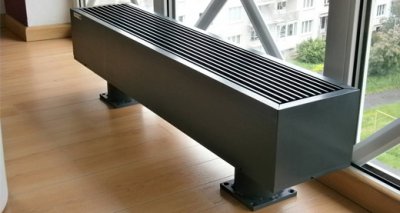
Floor convector is a new product among heating systems.
In a short time, it has gained popularity among Russians, since it is unpretentious in maintenance and easy to install, but its main advantage is that in winter at home, you do not need to wrap yourself in several layers of clothing even in severe "minus" temperatures.
This heater, unlike the Soviet cast iron battery, will not spoil even the most modern designer setting.
Content
Floor electric and water heating convectors: what are they
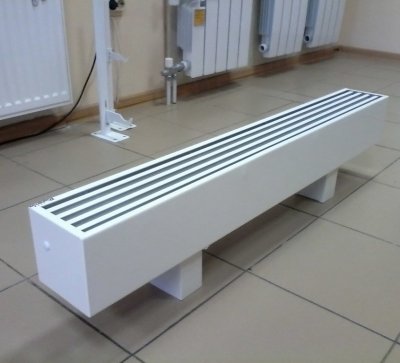
Floor convectors are understood as floor-mounted heating devices, the operating principle of which is based on natural air circulation.
The unit stands on the floor on legs that provide some distance from the floor surface, which allows heated air to circulate steadily from the bottom to the very top.
Its main difference from the traditional Soviet battery is that the former heats the room by means of thermal radiation, while convector - through the natural movement of air flow.
All these devices look like square boxes of length up to 200 cm. However, the shape can be any, depending on the client's wishes. The device is equipped with a protective grille on top.
Reference. The efficiency of some of these convectors is 95%.
Simply put: the air goes into the heater, and then, already heated, returns back and rises upward. The new flow follows the same path - the colder mass is carried away by a warm stream to the floor, from where it is fed into the convector.
Design principle
An essential part of a floor heating unit is one or more heat exchangers. They play a key role in transferring heat from the coolant to the heated air of the room. Usually, the heat exchanger is brass, copper or aluminum - that is, made of metal with a high thermal conductivity coefficient.
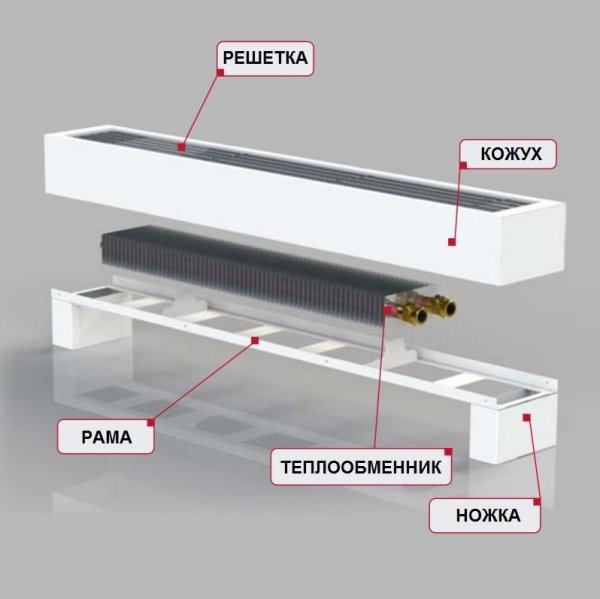
Photo 1. The structure of a floor heating convector. The arrows indicate the components of the heating device.
The device is enclosed in a stainless steel casing on top. and connected to the heating system via corrugated pipes. The electric drive ensures the operation of the built-in convector fan. The design also includes a transformer and a thermal valve.
Types of convectors
Convectors differ in the principle of circulation, which can be:
- natural;
- forced;
- adapted.
The first use natural air movement, while the latter have a built-in fan responsible for its circulation. It is because of it that the room is heated much better.
For a room with humid air, it is recommended to buy a floor convector with an electric motor that operates from an alternating current network. However, it will also make the energy consumption meter spin much faster, because devices that operate from direct current consume up to 70% less energy.
Where the devices are used
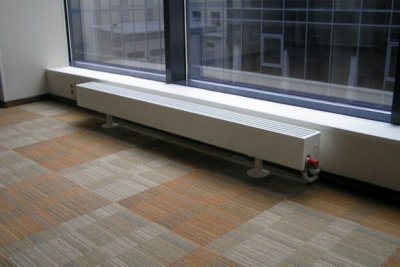
Floor heaters are used almost everywhere, in any type of premises, in offices and apartments.
They are indispensable in rooms equipped with glass doors, panoramic windows or shopping pavilions.
Sometimes, especially in banks, such a unit is placed at the entrance - it creates a special thermal curtain.
Pros and cons
Advantages:
- resistance to damage;
- not afraid of corrosion;
- ease of use and in the installation;
- variety of assortment (you can choose any device, any shape and color, depending on the interior features, which allows you to fit into any artistic solution);
- compact dimensions;
- low weight;
- overheating protection;
- impossibility of getting burned;
- absence of noise or unpleasant sounds at work.
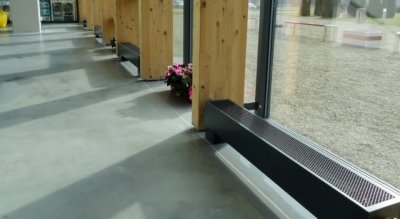
Flaws:
- Floor convector - a real dust collector: due to the air movement, it constantly attracts dust and requires effort to maintain.
- They use only in naturally ventilated rooms.
- This unit is suitable for standard rooms with low ceilings. In Stalin-type buildings, a convector will be useless.
Attention! All heaters of this type have a special built-in automatic needle air valve for blowing out air. It is also called Mayevsky crane.
Types of convector products by material of manufacture
Various materials are used to manufacture heating convectors.
Cast iron
These devices heat the room by moving hot air and simultaneously by radiating heat. Strictly speaking, these are the same Soviet cast iron radiators of a modernized type, as if disconnected from the central heating and placed on legs. Very often they are made in a special retro style, due to which they are installed in apartments and private houses.
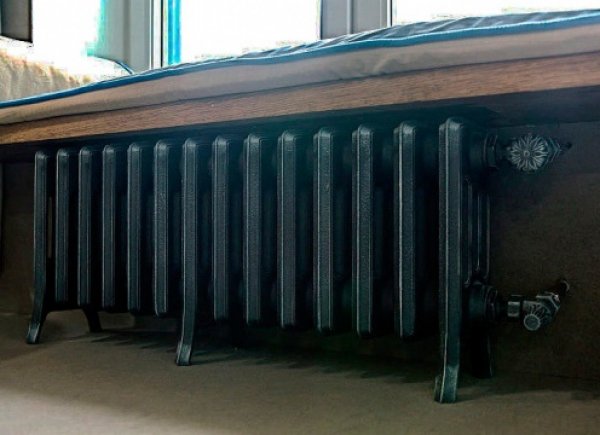
Photo 2. Floor heating convector made of cast iron. The device is quite low, located under the window sill.
Steel
Steel devices are the most common. Suitable for apartments, offices, shopping pavilions. It is characterized by compact dimensions, low weight, resistance to pressure surges and good heating quality. It is also an ideal solution for rooms with panoramic windows - the convector will not block the view.
Bimetallic
Made of two metals. Typically the design includes steel or copper core with aluminum threadBimetallic radiators heat the room faster and better and are not afraid of aggressive environmental influences.
Designer
In addition to standard models, they are often ordered exclusive, with specific dimensions, in the desired color scheme, in a certain style (usually high-tech).
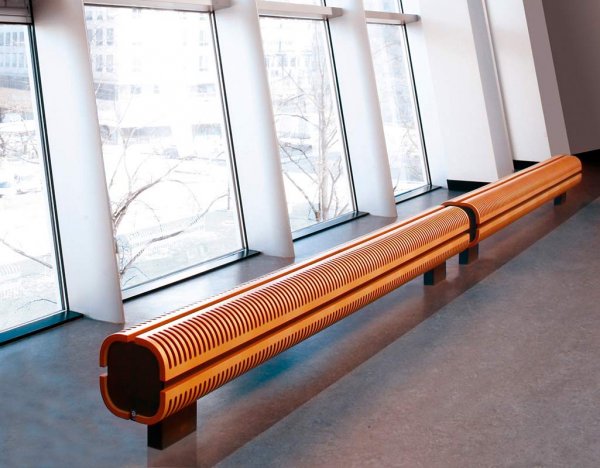
Photo 3. Designer floor heating convector. The device is covered with an original protective grille.
They are popular with owners of offices, apartments, private houses, and administrative offices with designer finishes.
How to choose the right device
When choosing a floor heater, pay attention to two main factors:
- square;
- volume.
For a room of area 2.5 - 2.7 m, and 10 m³ have to one kilowatt of power. This figure may be lower where central or autonomous heating is installed. For larger rooms, another rule applies: 35-40 W per cubic meter of volume.
Installation Features
Installation of the structure includes the following stages:
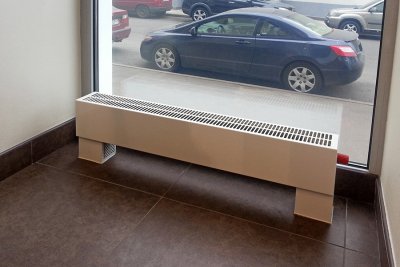
- Markup (on the floor, mark the places where the device will be located, as well as all communications and additional equipment).
- Water supply or another coolant.
- Direct installationIn this case, a separate main line is laid from the riser to the convector, through which hot water flows.
- Floor leveling. It is important to ensure that the convector is positioned strictly parallel to the floor.
- Fastening the decorative grille.
A valve is installed at the inlet, which regulates the flow rate, and also special tap for air removal.
Additional options
Additionally, the kit may include thermostat sensor to maintain the desired temperature in the room. This applies to water and electric models.
Useful video
Watch the video, which tells you which device is better for heating: an electric boiler or an electric convector.
Features of care and operation
The purchased convector will not require any special efforts in operation. Another thing is that you will have to pay attention to the room where it will stand. The convector dries the air very much. If it is a regular apartment, then do wet cleaning more often. In offices, it will have to be done every morning and every evening after work, especially if there is copying equipment there, spreading fine dust.
If there are small children in the apartment, choose model with frequent decorative grilleso that the child cannot stick his finger into the cells.






